Introduction
Robot dogs have become increasingly popular and advanced in recent years. While the concept originated decades ago, major strides have been made to develop robotic canines that move and function similarly to real household pets. Some of the most well-known and iconic robot dogs include AIBO, Spot, Laikago, and A1.
Robot dogs like AIBO and A1 were some of the earliest consumer robot pets, first released in 1999 and 2001 respectively. They captured the public’s imagination with their ability to walk, play, and respond to commands like real dogs. More advanced quadruped robots like Boston Dynamics’ Spot and Unitree’s Laikago showcase the latest developments in agility and mobility. With advanced movement and navigation capabilities, they hint at a future where robot pets could become commonplace.
In the brief history of robotic dogs, a few key models stand out as pioneering this technology and bringing it into the mainstream. As robotics and AI continue to progress, robotic canines keep inching closer to matching the capabilities of their living counterparts.
AIBO
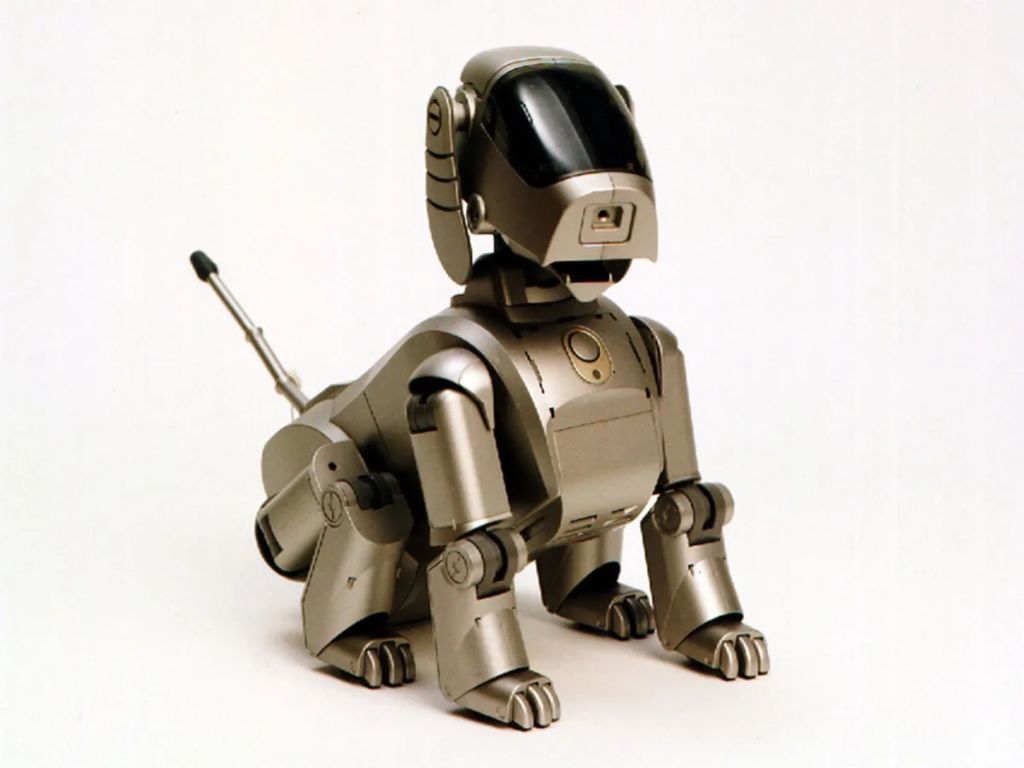
AIBO was the first commercially successful robot pet. It was created by Sony in 1999 and is considered the first consumer robot dog. Sony’s official AIBO website states that AIBO was the first consumer robot of its kind offered to the public when it was first introduced.
The AIBO robot was capable of developing from a puppy to an adult dog and exhibiting intelligent behaviors. According to the AIBO blog, it could walk, see its environment via cameras, and recognize words and gestures. AIBO was designed to mimic the physical appearance, movements, and sounds of a dog.
Spot
Spot is a famous four-legged robot dog made by Boston Dynamics (https://bostondynamics.com/products/spot/). Spot weighs about 25 kg and stands 83 cm tall. It is best known for viral videos showcasing its mobility and ability to perform various tasks like climbing stairs, traversing rough terrain, picking up objects, and opening doors (https://robotsguide.com/robots/spot).
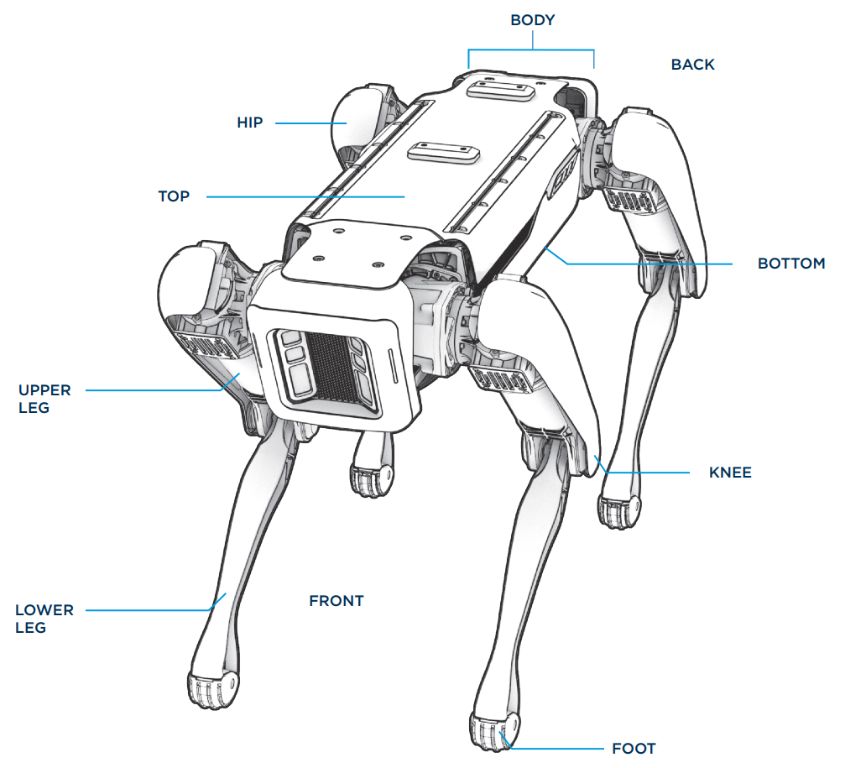
Boston Dynamics designed Spot to be a robust, autonomous mobile robot that can operate on its own in real-world environments. Extensive testing has made Spot reliable enough to work day after day without constant human oversight or intervention (https://bostondynamics.com/products/spot/).
The videos of Spot demonstrating its capabilities, such as dancing or pulling a rickshaw, have fascinated people and demonstrated the advanced mobility and versatility of quadruped robots. Spot’s fame comes largely from being an early quadruped bot capable of impressively lifelike movement and tasks.
Laikago
Laikago is a quadruped robot created by Unitree Robotics in China in 2019. Laikago stands 60cm tall and weighs 24kg (Autonomous Navigation for Laikago Quadruped). It features an advanced locomotion control system that allows Laikago to walk smoothly, turn quickly, and even do backflips (Unitree’s Laikago joins the growing robo-dog pack). Laikago can transition smoothly between walking, trotting, and galloping. Researchers have been experimenting with training Laikago to autonomously navigate challenging terrain using reinforcement learning (Robots Learning to Move like Animals).
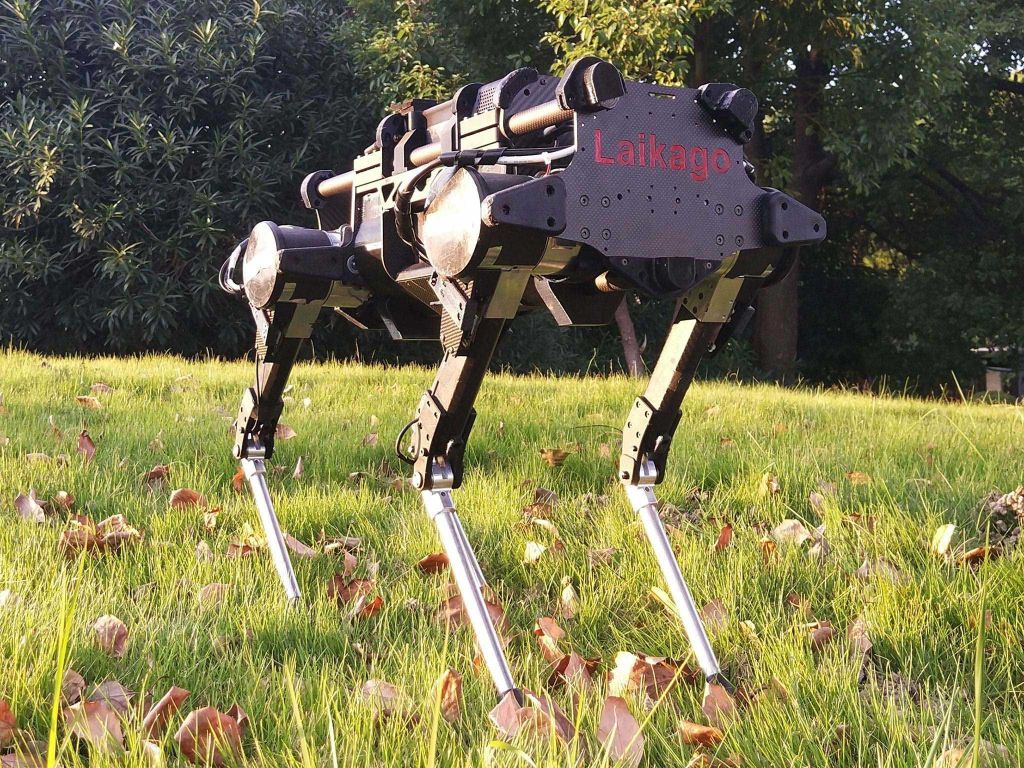
A1
A1 is an AI assistant created by Anthropic, an artificial intelligence company based in San Francisco. Launched in March 2023, A1 represents Anthropic’s focus on developing helpful, honest, and harmless AI systems.
Unlike other conversational AI like ChatGPT, A1 was designed to be a friendly companion that looks out for the user’s best interests. According to Anthropic, A1 will refrain from providing harmful instructions, exhibit trollish behaviors, or spread misinformation. The goal is for A1 to be helpful, harmless, and honest.
A key component of A1 is Anthropic’s Constitutional AI technique. This involves setting constitutional rules to constrain the agent’s behavior in order to align it with human values. For example, rules to maximize truthfulness, minimize harm, and correct misinformation.
Early feedback on A1 has been largely positive, with users praising its capabilities and judgment. However, some limitations have been noted including occasional non sequiturs and a lack of consistency in tone. As an early release, A1 is still improving through continued research and development by Anthropic.
Comparison
The main robot dog models on the market today include AIBO, Spot, Laikago, and A1. Let’s compare their key specs and features:
AIBO, created by Sony, was one of the first consumer robot dogs on the market. Launching originally in 1999, AIBO features advanced AI and can walk, bark, play, and respond to commands. However, it lacks some of the mobility of newer models. AIBO weighs around 6.6 lbs and has a battery life of only 2 hours (https://www.petoi.com/pages/robot-pet-comparison).
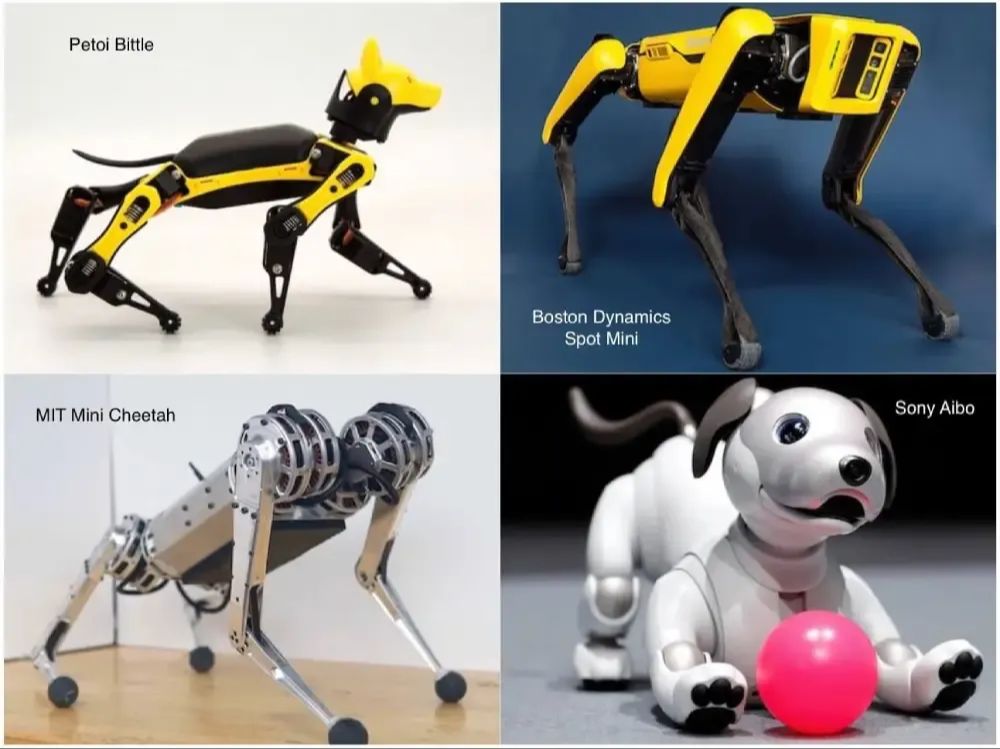
Spot by Boston Dynamics launched in 2019 and features very advanced mobility with its four legs. It can walk, run, climb stairs, operate outdoors, self-charge, and carry payloads. Spot weighs around 70 lbs and has a battery life of 90 minutes. It lacks realistic dog-like behaviors and interactivity compared to AIBO (https://www.petoi.com/pages/robot-pet-comparison).
Laikago by Unitree launched in 2020 and combines mobility with bio-inspired functions. It can walk in multiple gaits, jump, do backflips, self-balance, and more. Laikago weighs around 33 lbs and has a battery life of 2.5 hours. It has dog-like behaviors but less interactivity compared to AIBO (https://www.petoi.com/pages/robot-pet-comparison).
A1 by Anthropic launched in 2022 with advanced AI and mobility. It can understand and respond to speech, identify objects, navigate environments, follow people, and self-charge. A1 weighs around 40 lbs and has a battery life of 6 hours. Its AI capabilities surpass other models but it’s less mobile than Spot (https://www.petoi.com/pages/robot-pet-comparison).
Advancements
Recently robot dog technology has seen significant advancements. For example, MIT has developed a mini cheetah robot dog that can now reliably run untethered (source: https://www.technologyreview.com/2022/07/18/1056059/robot-dog-ai-reinforcement/). This breakthrough was achieved through new reinforcement learning algorithms that allowed the robot dog to teach itself how to walk and run in complex environments without human input. The researchers used a quadruped robot dog platform and trained it in simulation across thousands of different terrain situations. It learned agility skills like jumping over obstacles and running at high speeds up to 90% of its capacity. This demonstrates how AI can enable robot dogs to acquire real-world locomotion skills rapidly with minimal human effort.
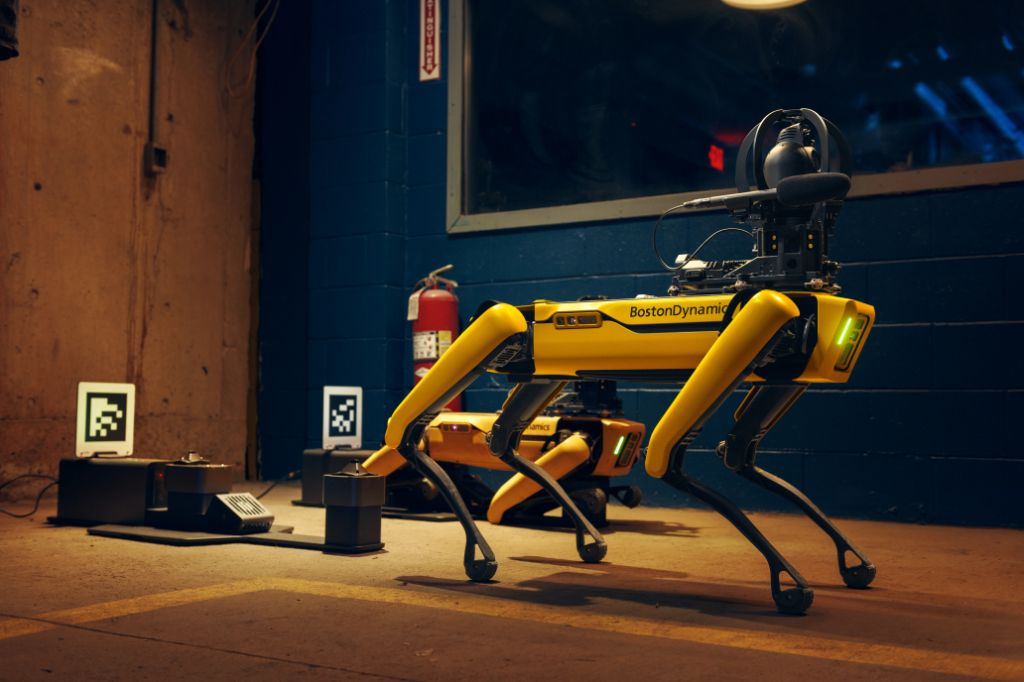
Another key advancement is Boston Dynamics’ Spot robot dog gaining permissions to operate commercially without human handlers or tethers in certain jurisdictions. This allows Spot to take on inspection, monitoring and sensing tasks autonomously over extended periods by relying on its own perception and navigation skills (source: https://www.chronicle.com/article/a-tech-giant-is-pitching-a-robot-dog-for-campus-security-its-a-hard-sell). However, autonomous public deployment of robot dogs remains controversial due to concerns around privacy and surveillance. Overall, reinforcement learning and computer vision innovations are rapidly enhancing robot dogs’ mobility, perception and autonomy in unstructured environments.
Applications
Robot dogs like SpotMini from Boston Dynamics have a wide range of potential applications thanks to their mobility and advanced sensors. As described in this Quora article, SpotMini could be used for inspection tasks in hazardous environments, carrying and delivering items, providing remote presence, and assisting with security and surveillance. Other applications include search and rescue missions, entertainment, assisting the elderly and disabled, and enhancing virtual reality experiences.
The Aibo robotic dog from Sony is designed more for home entertainment and companionship. As explained on the Animal World site, Aibo aims to create fun and emotionally engaging experiences for families. The AI technology allows each Aibo to develop a unique personality.
In the future, advanced robot dogs may take on expanded roles like guiding blind people, providing therapy, assisting with household chores, and monitoring pets or children. Their mobility, flexibility and continuing improvements in AI will enable them to help in many aspects of life.
Future
Robot dogs have come a long way in recent years, but there is still significant potential for future advancements. One likely direction is artificial intelligence improvements that give robot dogs more autonomy and decision-making capabilities. While some may find the idea worrisome, robot dogs with AI could take on more complex tasks and operate in dangerous environments without putting human lives at risk. However, ethical concerns around arming robot dogs would need to be carefully considered.
Another potential advancement is giving robot dogs more dexterity and mobility to navigate even more challenging terrain. Removing obstacles like stairs would make them useful in more situations. Enhanced sensory capabilities would also allow robot dogs to gather valuable data about their surroundings.
As the cost of robotics falls, robot dogs may become more mainstream. We could see robot dogs assisting with law enforcement, working on construction sites, exploring disaster areas, providing companionship and physical assistance for the elderly and disabled, and much more. Their versatility and usefulness will continue to expand.
Some predict that by 2030 we may have multi-legged robots that can outrun and outmaneuver humans. However, challenges around power supply, manufacturing costs, and regulation will need to be overcome first. If robotics companies can create affordable, useful robot dogs and address ethical concerns, the future looks bright.
Conclusion
In summary, several robot dogs have gained fame and recognition over the years, but Spot from Boston Dynamics stands out as the most well-known. With its advanced mobility and wide range of capabilities, Spot has captured the public’s imagination and demonstrated how robot dogs may be useful across many industries. Other notable robot dogs like AIBO, Laikago, and A1 push the boundaries of robotics and AI, but have not reached Spot’s widespread popularity. As robot dogs continue to advance, we will likely see more become household names. However, Spot seems poised to maintain its status as the most famous robot dog for the foreseeable future based on its impressive technological feats and prominence in pop culture.
